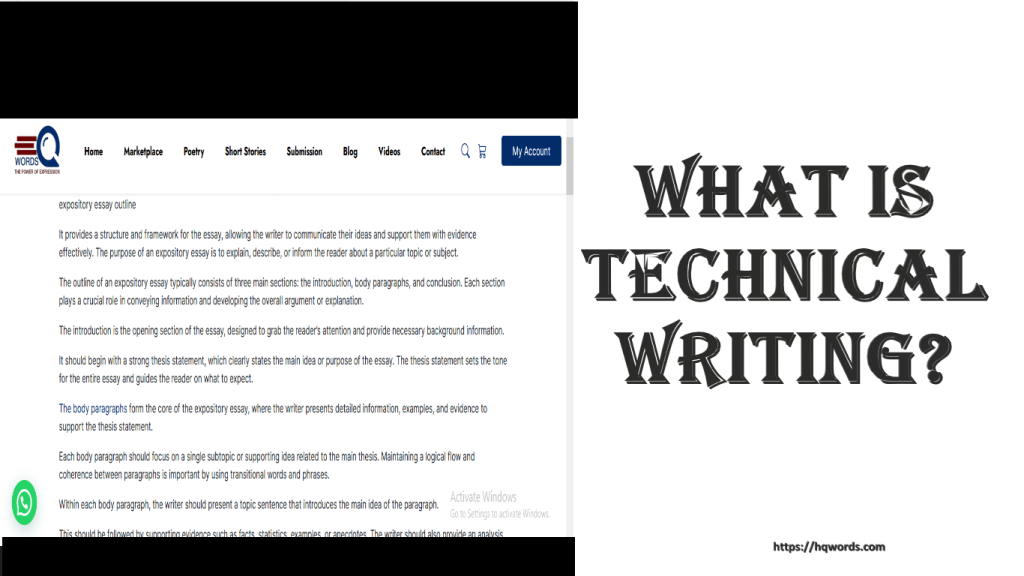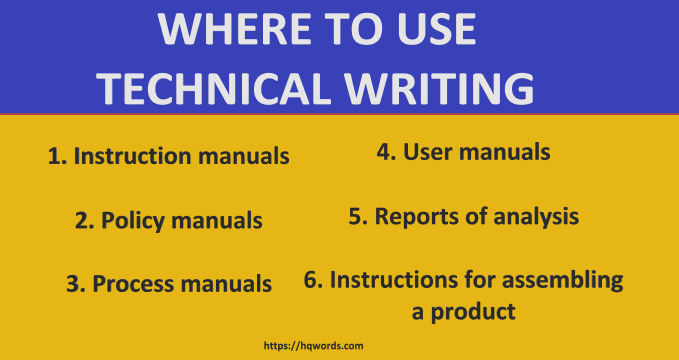What Does Technical Writing Mean?
Technical writing is a specialized type of writing that is different from creative or academic writing. Read about technical writing here.
by Nsikak Ekikor.

What does technical writing mean?
Technical writing is a type of writing in which the author writes about a specific subject that requires guidance, instruction, or explanation.
This writing style serves a very different purpose and has very different characteristics than other types of writing, such as creative writing, academic writing, or business writing.
READ ALSO:
- Song of a Girl Going to Bathe
- Writing Tips To Guide Your Writing Journey
- Life is a Place Where it’s Forbidden to Live
What is Technical Writing?
Technical writing can be defined in a variety of ways.
The most useful and precise definition of technical writing is a type of writing in which the author writes about a specific subject that requires direction, instruction, or explanation.
Simply put, technical writing entails simple, easy-to-understand explanations and instructions for a specific subject.
Uses for Technical Writing
Technical writing consists of simple, easy-to-understand explanations and/or instructions about a specific subject. It is a quick and easy way to explain something and how it works.
The subject of technical writing can either be:
Tangible
Something tangible, such as a computer or software program, or instructions for assembling a piece of furniture.
Abstract
Something involving a series of steps unrelated to a tangible object. The steps required to complete an office process are one example.
Some examples of technical writing include:
1. Instruction manuals
2. Policy manuals
3. Process manuals
4. User manuals
5. Reports of analysis
6. Instructions for assembling a product
Summarization of a long report that highlights and shortens the most important elements

Tips for Good Technical Writing
Regardless of the type of document which is written, technical writing requires the writer to follow the properties of knowing their audience, writing in a clear, non-personal style, and doing extensive research on the topic.
By including these properties, the writer can create clear instructions and explanations for the reader.
Know your Audience
An expert in the field will understand certain abbreviations, acronyms, and lingo that directly applies to such a field.
The novice will not understand in the same manner and, therefore, every detail must be explained and spelled out for them.
Use an Impersonal Style
Write from a third-person perspective, like a teacher instructing a student. Any opinions should be omitted.
The writing should be straightforward, to the point, and as simple as possible to make sure the reader understands the process or instruction.
This at times may appear as simply a list of steps to take to achieve the desired goal or maybe a short or lengthy explanation of a concept or abstract idea.
Know how to Research
Gather information from a number of sources, understand the information gathered so that it can be analyzed thoroughly, and then put the information into an easy-to-understand format to instruct those who read it.
The more inexperienced your audience, the more information you will need to gather and explain.
Be thorough in the description and provide enough detail to make your points; but, you also have to consider that you need to use an economy of words so that you do not bore your reader with gratuitous details.
A good technical writer can make a difficult task easy and can quickly explain a complex piece of information.
Examples of Technical Writing
Depending on the information and audience, technical writing encompasses a wide range of genres and writing styles.
Technical writers do not create all technical documents. Almost everyone who works in a professional setting creates some kind of technical document. Here are some examples of technical documentation:
Instructions and Procedures
These are documents that assist both developers and end users in operating or configuring a device or program.
User manuals and troubleshooting guides for computer programs, computer hardware, household products, medical equipment, mechanical products, and automobiles are examples of instructional documents.
Proposals
Most projects begin with a proposal, which is a document that describes the purpose of the project, the tasks that will be completed, the methods used to complete the project, and, finally, the cost of the project.
The proposals cover a wide range of topics.
A technical writer, for example, might write a proposal outlining how much it will cost to install a new computer system, a marketing professional might write a proposal outlining product offerings, and a teacher might write a proposal outlining how a new biology class will be structured.
Emails, Letters, and Memoranda
These are some of the most frequently written business documents.
Letters and emails can be written with a variety of goals in mind—some are intended to simply communicate information, while others are intended to persuade the recipient to complete a specific task.
Memoranda (memos) are documents written to other employees within a company, whereas letters are usually written to people outside of the company.
Specifications
Specifications are design outlines that describe an object’s or process’s structure, parts, packaging, and delivery in sufficient detail for another party to reconstruct it.
A technical writer, for example, might draw and write the specifications for a smartphone or bicycle so that a manufacturer can produce it.
Descriptions
Descriptions are concise explanations of procedures and processes that assist readers in understanding how something works.
A technical writer, for example, might create a document that illustrates the effects of greenhouse gases or demonstrates how a bicycle’s braking system works.
Résumés and Job Applications
Résumés and job applications are other examples of technical documents. They are documents that are used in a professional setting to inform readers of the author’s credentials.
Technical Reports
Technical reports are written to provide readers with task-related information, instructions, and analysis.
Reports come in a variety of formats. A technical writer, for example, might evaluate a for-sale building and write a trip report outlining his or her findings and whether or not the building should be purchased.
Another writer who works for a non-profit organization may publish an evaluation report based on the findings of the organization’s air pollution research.
READ ALSO:
- Daddy’s Little Girl 2 – Letter to Parents
- The Tortoise And The Feast in Heaven
- Why The Tortoise And The Squirrel Are Not Friends
In conclusion, the art of providing detailed instruction to help users understand a specific skill or product is known as technical writing.
We believe the above piece of information was useful. Please, kindly share this content on all the available social media platforms.
